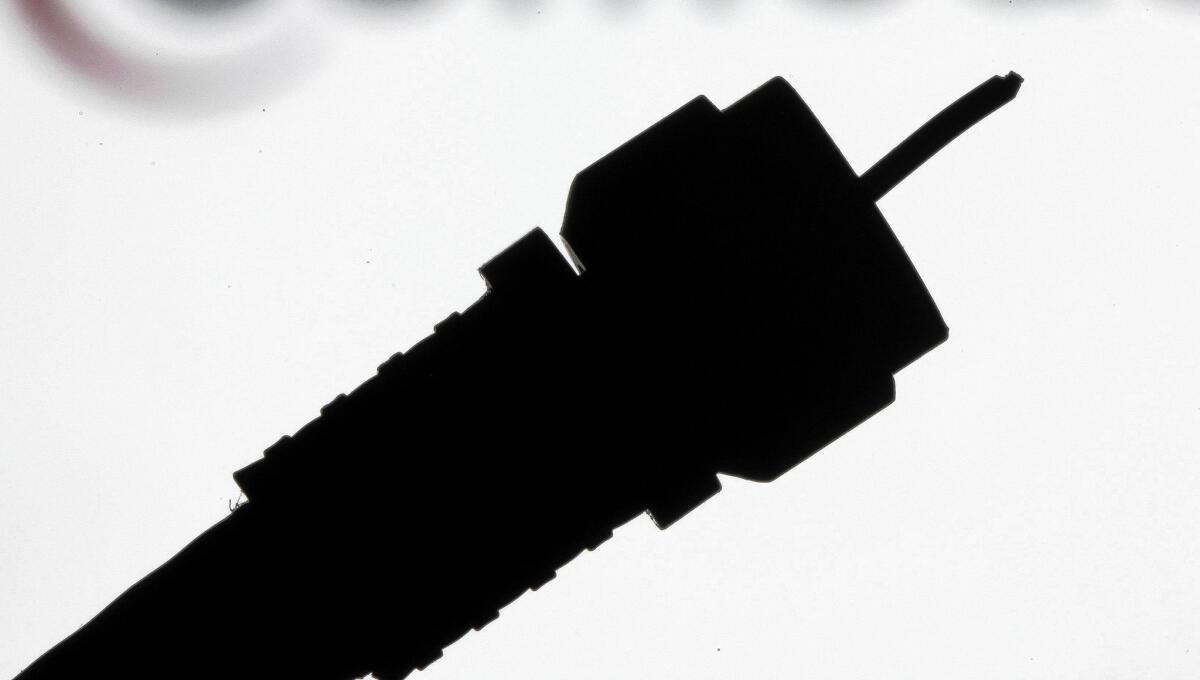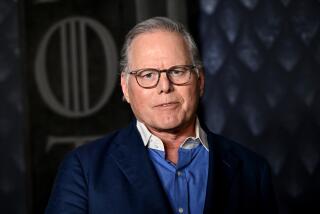Column: As Time Warner Cable crows, I’m cutting the cord

A funny thing happened this week on the road to cable-TV extinction: Time Warner Cable said it added residential video subscribers for the first time in nine years.
Southern California’s leading pay-TV provider gained 32,000 residential video customers nationwide last year — a turnaround so unexpected that Chief Executive Rob Marcus issued a statement praising the company’s “stellar” performance.
Stellar, however, is relative considering that Time Warner Cable has lost about 2.7 million residential video customers since 2010 as more people have grown sick of bloated bills and instead chose to cut the pay-TV cord.
You can finally count me among them.
Join the conversation on Facebook >>
With the start of a new year, I’ve taken the plunge and bid sayonara to hundreds of cable channels I neither wanted nor watched. So far, it’s been great.
I’ll run down how I cut my cable bill in half. First, let’s parse Time Warner’s announcement.
“Ordinarily we wouldn’t announce subscriber results until our earnings release, but given our results, I couldn’t wait to thank the team for its outstanding performance,” Marcus said. The company’s earnings won’t be announced until the end of the month.
Eric Mangan, a Time Warner spokesman, attributed the gain in TV customers to the company just being so darn impressive.
“We’re improving reliability and improving customer service,” he told me. “Customers are taking notice and are being attracted to us.”
Telecom analyst Craig Moffett acknowledged that Time Warner and other cable companies have made efforts to step up their game. But he said the most likely explanation for Time Warner’s subscriber growth is that people are giving up on less-than-stellar TV offerings from the likes of Verizon Communications and AT&T.
SIGN UP for the free California Inc. business newsletter >>
Laura Martin, senior entertainment and Internet analyst with Needham & Co., said gaining customers “is definitely better than losing them,” but a gain of 32,000 for a company of Time Warner’s size is too minuscule to indicate a broader trend.
“It could have more to do with pricing or marketing,” she said. “We just don’t have enough data to really know more.”
Martin was more intrigued by Marcus’ decision to reveal the subscriber numbers weeks ahead of Time Warner’s scheduled earnings announcement.
She speculated that Charter Communications’ $55-billion acquisition of Time Warner Cable may be approved by the Justice Department and Federal Communications Commission before the end of January, which could preempt Time Warner’s earnings.
“By releasing the subscriber numbers now, it allows Rob Marcus to take a victory lap before the deal closes,” Martin said.
We’ll see. In any case, I doubt that Time Warner has discovered pixie dust for putting the kibosh on cord cutting.
A recent report by the New York research firm EMarketer estimated that about 17% of U.S. households will have cut the cord by the end of this year, rising to nearly a quarter of households by 2019.
“Cord cutting is unambiguously accelerating,” Moffett said.
My colleagues Meg James and Yvonne Villarreal wrote the other day about how cord-cutting costs can pile up if you remain loyal to various premium services. Netflix, Hulu, YouTube Red — before you know it, you’re into some serious coin. And that’s on top of the as much as $75 you need to shell out monthly for broadband access.
I decided I needed to set limits and to be willing to forgo some programming.
My first step as a cord cutter was to determine how muscular a broadband Internet connection I’d need. I like to stream movies, my wife enjoys surfing the Web and streaming audio, and our son is a rabid online gamer.
After speaking with experts, I determined that a download speed of 100 megabits a second would do the trick. Time Warner was able to hook me up for $50 a month for the first year.
There are a number of choices for streaming-video players, including Apple TV, Google Chromecast and assorted game consoles. I went with a Roku 3 player because it was on sale for about $70 and because it allowed me to access HBO — the only channel I watch with any frequency — for $15 a month.
Roku also streams movies and TV shows from Amazon Prime, which I already had for free two-day deliveries. It costs $8.25 a month. At this point, I’ve decided to skip Netflix, Hulu and other competing services.
I get local channels using an indoor antenna that hooks up to my TV. I went with the $40 Mohu Leaf over cheaper rabbit ears.
Now we come to what I’ve had to give up. The biggie is AMC — I’m a “Walking Dead” fan. I’ve also said bye-bye to CNN.
I could watch AMC on Hulu, with commercials, for $8 a month. Or I could receive both channels via a streaming service called Sling TV for $20 monthly.
But I’m determined to tighten my digital belt. I’m optimistic that AMC and CNN soon will become available independently, as HBO now is.
Add in $10 a month for phone service, and I’ve slashed a cable bill that was topping $150 monthly by about 50%. And so far, there’s been no shortage of stuff everyone in the house wants to watch.
All in all, a pretty stellar arrangement.
David Lazarus’ column runs Tuesdays and Fridays. He also can be seen daily on KTLA-TV Channel 5 and followed on Twitter @Davidlaz. Send your tips or feedback to [email protected].
MORE FROM DAVID LAZARUS
California’s Lemon Law helps protect pricey consumer electronics
Drivers need to get from A to B safely — not feed their digital addictions
Europe and U.S. have different approaches to protecting privacy of personal data
More to Read
Inside the business of entertainment
The Wide Shot brings you news, analysis and insights on everything from streaming wars to production — and what it all means for the future.
You may occasionally receive promotional content from the Los Angeles Times.











